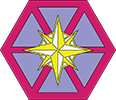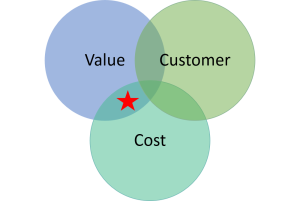Affordability, with its triple aim and integration of Value, Customer and Cost, provides a foundation and framework for improving and pursuing continuous improvement of both products and services. It also serves as a model for improving business, increasing competitiveness and growing market share. When used in concert with other tools and toolboxes such as Balanced Scorecard, Baldrige Criteria, Lean, Six Sigma and other Enterprise improvement instruments, Performance Excellence can be achieved.
Since the beginning of the year I’ve been showcasing the rudimentary elements of Affordability. The past two BLOGs focused on the relationship of Customer and Value, and Customer and Cost. This BLOG spotlights the relationship of Value and Cost. This area is often misinterpreted as Value Engineering and Value Analysis (aka; VA/VE). There are many similarities, however within Affordability, it extends beyond the original and traditional definition of VA/VE. It also includes the dimensions of Customer/Value and Customer/Cost as a balance for the completion of the triple aim.
Value
- Value is defined as; “What you provide that the customer requires, wants and needs, and is willing to pay for.”
- Value is the importance of the organization, what has worth for the customer, what is useful, what is needed, what is wanted, and what is required of a product or a service from the customers’ perspective.
Cost
- Customer Cost is defined as the customer’s actual overall cost of a product or service, or total operating cost including the purchase price, maintenance fees, associated costs and any other affiliated costs related to that product or service.
- Organization Cost, is viewed from the organization’s perspective, with consideration of all costs, including direct costs, labor costs and indirect costs to produce or provide the product or service using an internal viewpoint. When organization cost is removed from the revenue produced from the sale of a product or service, the result is profitability (Revenue – Cost = Profitability). For non-profit organizations, when cost equals funding available a balanced condition is achieved.
The place where Value and Cost come together portrays the investment and expense necessary to achieve the purpose and intent of product and/or service the organization is providing. It encapsulates the direct expenses, the indirect expenses, the variable expenses, the cost of quality (and the cost of non-quality), the required success and performance measures, along with the ability and capability to solve problems and resolve issues.
Focusing on Value and Cost alone has mislead numerous organizations onto a path of failure. So, within Affordability, its emphasized that all components and all intersecting factors should be addressed within a ‘Triple Aim’; Value, Customer, Cost, Customer/Value, Customer/Cost, Value/Cost. Its not one or some, but all.
Paul
 Performance Excellence Associates, Inc.
Performance Excellence Associates, Inc.